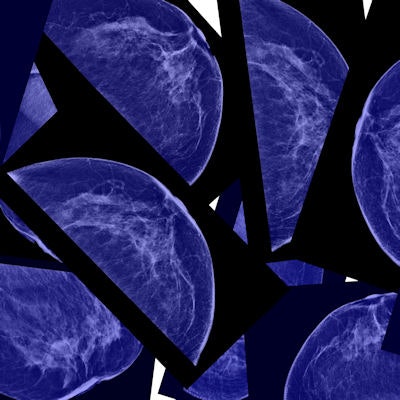
Collaboration between referring clinicians and radiologists could decrease variability in surveillance imaging for breast cancer survivors, according to a survey study published November 17 in the Journal of the American College of Radiology.
A team led by Dr. Derek Nguyen from Johns Hopkins Medicine in Baltimore found that breast imaging practices have wide variability in recommending diagnostic mammography for imaging surveillance after breast-conserving surgery -- ranging from six months to five years -- before returning to screening mammography. Their results suggest influence from referring clinicians is a contributor to this variability.
"In doing so, this (collaboration) could not only result in improving the quality of individualized follow-up surveillance after breast-conserving surgery but also present an opportunity to potentially close racial and financial disparity gaps preventing patient follow-up with annual mammography recommendations," Nguyen and colleagues wrote.
The National Comprehensive Cancer Network (NCCN) began recommending annual mammography in 2009 for imaging surveillance in patients with breast cancer after breast-conserving surgery. However, the guidelines did not specify whether screening or diagnostic mammography should be used.
In 2019, the American College of Radiology (ACR) updated its appropriateness criteria for surveillance of asymptomatic stage I breast cancer to the use of either screening mammography or diagnostic mammography for imaging surveillance after such surgery. However, a time frame was not established for if diagnostic mammography is used.
The researchers said these "ambiguous" recommendations have resulted in "immense" variability in clinical practices, which could negatively affect patient mortality.
"Furthermore, the differences in out-of-pocket costs between screening and diagnostic mammography may result in reducing patient follow-up adherence in the setting of socioeconomic disparities," they added.
Nguyen et al wanted to understand the reasoning behind current practice protocols in the setting of what they called "ambiguous" recommendations from both the NCCN and the revised ACR appropriateness criteria.
They sent the five-question online survey in December 2020 and closed it in January 2021. The first three questions asked about the practice setting, institution name, and location. The final two questions were about the surveillance protocol for breast cancer survivors after breast-conserving surgery and why the protocol was chosen.
The study authors found that 275 of the 381 practices recommend diagnostic mammography for surveillance after breast-conserving surgery ranging from six months to five years before returning to screening mammography, with two to three years being the most common timeframe (116 of 381).
However, 30 of the 381 practices recommend returning immediately to screening mammography while 18 recommended diagnostic mammography indefinitely.
Preferences of referring clinicians (243 of 381) and radiologists (194 of 381) were the most common reasons influencing protocols for practices.
The team wrote that the results suggest that because protocols are dependent and influenced by referring clinicians, collaboration between clinicians and radiologists can establish standardized surveillance imaging guidelines
"Decreasing variability between practices could reduce confusion for clinicians, radiologists, and, most important, patients," the group said.




















